It might feel easy to dip into despair every time you hear about a new technology threatening to make us all redundant and take over the world, but humans and technology actually make a great team — especially as a recruiter.
With the right recruiting tools, you can let the robots do the heavy lifting while achieving better results for your team and candidates. These kinds of tools help you streamline, automate, or speed up the hiring process without compromising on candidate quality or experience.
From candidate screening and communication management to interview scheduling and onboarding, there are tools for every part of the hiring process. Which are best for your HR tool stack? We’ve researched and used different types of recruiting tools to bring you 15 great recommendations.
TL;DR — Key Takeaways
While you can recruit without recruitment tools, they are extremely helpful if you want to attract high-quality candidates and ensure a great candidate experience.
49% of job applicants are willing to turn down an offer due to a poor recruiting experience. So, it’s vital to have an optimized recruitment process these days that’s equal parts machine-fast and human-warm.
The right tools empower hiring managers to save time by automating time-consuming tasks. Recruiters can track applicants effortlessly, make more informed hiring decisions, give data-driven feedback, and manage the entire recruitment process easily
In 2024, these tools go beyond traditional job boards and offer unique features like artificial intelligence to speed up sourcing candidates, an analytical applicant tracking system, seamless social media management, cognitive ability tests, and candidate feedback tools.
The types of recruitment tools you need will ultimately depend on your hiring strategy and the hiring team’s strengths and weaknesses.

What is recruitment technology?
Recruitment technology refers to the collection of online recruitment tools talent acquisition teams use to make hiring fast and simple. Common tools include skills assessment platforms, applicant tracking systems, and recruitment marketing software.
While you can find tools that help you do things like write job descriptions, attract passive candidates, and source candidates in one place, recruiters today have access to more niche and high-tech solutions like Freshdesk and Toggl Hire that help the team perform sophisticated functions in talent acquisition that go far beyond simply publishing job ads for job seekers to see.
By implementing recruiting tools in human resources management, especially emerging technologies like AI and machine learning, you can connect with suitable candidates quicker, assess whether they’re really a good match, and streamline your hiring process — all with the help of a few little digital friends, aka recruitment software.

Benefits of using recruiting tools
As a recruiter or hiring manager, you’ve got a lot on your plate.
Continually keeping the talent pool full of quality candidates requires time and effort, including crafting the perfect job description, leveraging social media, screening for skills, scheduling interviews, managing your employer brand, and keeping candidates informed throughout the hiring process.
Recruiting tools can help automate a lot of those tasks (and, in some cases, handle them entirely for you). However, to harness the power of this type of technology, it helps to know how to choose the right tools based on the benefits you need most.
Reduce hiring costs
Recruiting tools help improve efficiency at every level of the hiring process, and time saved is money saved.
The Chartered Institute of Personnel Development (CIPD) estimates that the average position takes 43 days to fill in the US. If you can reduce your time to hire by 50% — down to just 21 days — you can cut your cost per hire roughly in half.
How? The biggest chunk of money spent on recruitment is the recruiter’s salary (assuming there are no staffing agencies involved). The less time they spend per hire, the more cost savings for you.
Let’s run the numbers.
The average cost to fill a vacancy in the US was $4,700 in 2023, according to The Society for Human Resource Management (SHRM). Assuming 80% of that is the cost of the recruiter’s salary, that means the average American company is spending $3,760 per hire on internal recruiting staff.
If the recruiter cuts their time to hire in half thanks to savvy recruiting tools, the cost to fill comes down to $1,880. Factoring back in the remaining 20% of the cost on software and miscellaneous expenses, the total cost to fill the vacancy drops from $4,700 to $2,820 overall — a 40% saving on every new hire!
Automate processes
The quickest and easiest way to reduce the time to hire is to automate repetitive tasks in the hiring process. Key tasks that hiring teams can automate include resume screening, interview scheduling, and candidate communication.
Tools like Toggl Hire can help you reap the benefits of automation at every step of the candidate journey. For example, Toggl Hire allows you to…
✅ Immediately see how candidates score on an initial skills test
✅ Manage email communication in bulk to those who don’t make the cut
✅ Keep track of potential hires with an intuitive Kanban-style board
By leaving the heavy lifting to the recruiting tools, talent acquisition leads have more time and head-space to add a more personal touch to the leading candidates.
Improving candidate experience benefits both the hiring team and your employer brand, which is crucial to attracting top talent. Basically, it’s a positive feedback loop made in recruitment heaven.
Choose better candidates
Most recruiting tools nowadays are built to help you make data-driven decisions, and making informed hiring decisions means you’re always hiring for skill and not because of inflated experience, connections, or because you’re impressed by seeing “ex-Google” on a LinkedIn profile.
Skills assessment platforms are a great example of how candidate assessment tools can help you identify and hire quality candidates faster.
Sure, there will always be an element of gut instinct involved, but the more data-driven and automated you are in getting from 1,000 to the top 20 potential candidates, the better your hiring process will be.
Create fair hiring processes
Everyone loves transparency and predictability, and by leveraging recruiting tools, you can create a consistent, standardized candidate evaluation process. This makes promoting fairness and equality in candidate selection effortless and authentic.
Features like anonymized applications, structured assessments built on intention and aligned with company goals, and skills tests that don’t rely on connections or impressive name drops are great for combating unconscious bias.
They also support diversity, equity, and inclusion initiatives by facilitating unbiased candidate sourcing and assessment.
Who can get the most from recruiter tools?
Wondering if recruitment tools are right for you or if they’re just a fancy way to improve the experience for job seekers? They’re great for both parties, especially in today’s competitive job market, but they’re especially great for any hiring team struggling with the following issues:
HR professionals and recruiters tasked with managing high-volume hiring processes can leverage many recruitment tools to streamline workflows and increase efficiency.
Small and medium-sized businesses seeking cost-effective solutions for talent acquisition and recruitment can benefit from the scalability and affordability of modern recruiter tools.
Organizations committed to enhancing diversity and inclusion in their hiring practices can utilize the right hiring tools to implement fair and unbiased candidate evaluation processes.
Companies aiming to improve their employer brand and provide a positive candidate experience can maximize the use of recruiting software to engage and attract top talent effectively.
Types of recruitment tools
The list of recruitment tools and techniques is long, but don’t panic! You don’t have to start using all of these recruitment tools today (or even tomorrow). Test out a few of the best recruitment tools, see what works for you and your team, and leave the ones that don’t.
AI Writing Tools: Hiring tools that help with creating job descriptions free from discriminatory or selective language, encouraging any job seekers who identify with the brand values to apply.
Mobile Compatibility Tools: Hiring tools that make your job boards, job postings, and application process mobile-friendly to encourage qualified candidates to apply from their phones.
Social Media Integrations: Any social media management tool that pushes job postings across your social profiles while keeping track of analytics like views, clicks, and applicants.
Chatbots: Artificial intelligence (AI) tools that can integrate with your website to provide automated answers to questions from job seekers.
Pre-Employment Assessments: A recruiting tool that provides various types of assessments to help recruiters and hiring managers evaluate candidates‘ cognitive abilities and job-related skills. Vital for making data-driven hiring decisions.
Video Interviewing Platforms: Hiring tools that facilitate remote and asynchronous interviews, enabling recruiters to assess potential candidates from anywhere and eliminate the need for in-person interviews.
Candidate Background Check Software: Software that verifies candidate information, authenticity, and history in a highly time-efficient and accurate way.
Applicant Tracking Systems: A recruiting tool that helps recruiters manage job postings, applications, and candidate communication efficiently.
Email Sequencing Tools: Hiring tools that allow you to set and forget strings of email campaigns to keep communication with candidates running smoothly.
Productivity Tools: Task management tools like Toggl Plan, Asana, or Trello that help you keep track of your progress and stay productive.
Recruiting CRM Software: A recruiting tool that helps recruiters and hiring managers streamline the flow of candidates through the hiring process, fostering more effective and efficient communication.
Candidate Onboarding Software: Hiring tools that welcome new hires into their new role and help them settle into the company.
Timesheet Software: Hiring tools that organize worker availability and scheduling, client approval, and payments.
Payroll Management Software: Software that manages paydays that are stress-free, timely, and legally compliant, thanks to features like automated tax and forms, benefits management, reports, and more.
Invoicing Tools: Hiring tools that automate the billing process by simplifying the sending and receiving of invoices from various senders.

15 recruiting tools to use in 2024
Before deciding what the right recruitment tools are for you, consider what your hiring goals are.
If your employer brand is pretty strong and you’ve got lots of candidate applications flowing in, a sourcing tool might not be so much of a priority for you. On the flip side, if you know your interview process has a lot of bottlenecks, perhaps consider a screening tool to help you shortlist faster.
Speaking of shortlists…we’ve shortlisted 15 recruiting tools we love and suggest for anyone looking to level up their recruitment process, reduce costs, and improve the quality of hire.
1. Datapeople
💡 Best for writing better job descriptions.
The first step to filling job openings? Writing compelling job ads — something Datapeople helps Lever customers do. Multiple stakeholders can write, review, and revise descriptions in Datapeople, then use the one-click sync to send those descriptions to Lever.

💰 Pricing: Custom pricing available on request
💬 What Customers Say: “Easy way to remove any bias from your job postings and broaden your candidate pool.” — Blake C., Recruiting Manager
💻 Other Helpful Tools:
Textio
Applied
Gender Decoder
2. Indeed
💡 Best for posting job openings.
Indeed is a globally renowned job aggregator and the best starting point for your hiring process. You can easily post job openings, screen resumes, and connect with top talent. With an extensive candidate database and powerful search tools, finding the perfect fit for your team is a piece of cake.
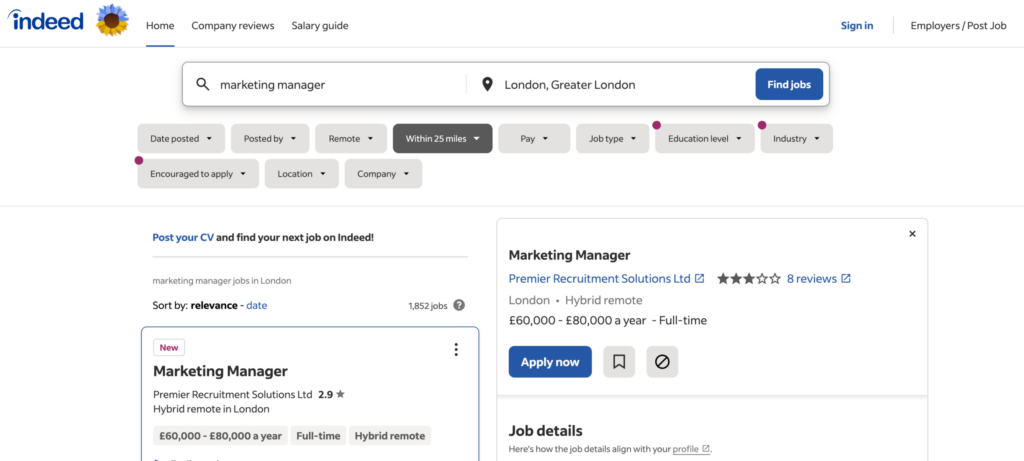
💰 Pricing: Varies depending on job postings, which can either be free or sponsored posts. Indeed recently switched from a “cost per click” model to a “price per application” model, meaning you only pay for quality applications.
💬 What customers say: “Indeed is an exceptional resource for recruiting. Easy to use and manage, Indeed makes it simple to post a job description and start receiving resumes in minutes.” — Jenna C, Senior IT Recruiter
💻 Other Helpful Tools:
ZipRecruiter
Monster
Glassdoor
3. Holly
💡 Best for automating candidate sourcing.
Holly, also known as Holly Hires AI, is one of the newest recruiting tools out there. Kind of like the ChatGPT of candidate sourcing, you input a prompt telling her what kind of candidate requirements you’re looking for, and she will scrape 750 million profiles to bring you the best matches.

💰 Pricing: Holly’s professional package starts at $59/month, including sourcing unlimited candidates for 3 roles at a time. There is also a free plan and bespoke package options, with pricing on request.
💻 Other Helpful Tools:
PhantomBuster
Trinsly
4. Toggl Hire
💡 Best for assessing candidates’ skills.
At Toggl Hire, we’re always looking for innovative ways to help recruiters connect with the right talent, fast. Alongside our expert-created skills tests, we also offer anti-cheating measures, candidate recommendations, and video intro solutions that enable an instant connection and make the screening process way more efficient.

💰 Pricing: With our subscription-based model, your team can choose a monthly (or annual) package that suits your business needs – from $17/month for the basic plan to $399/month for all the bells and whistles that enterprise companies need.
💬 What customers say: “We’ve been using Toggl Hire for 2+ years. It’s easy and helps us perform a quick and effective top-of-the-funnel filtering while keeping a great Candidate Experience.” — Gilad Bornstein, Co-founder & CEO, Flatworld
💻 Other Helpful Tools:
TestGorilla
Clevry
HackerRank
5. Deel
💡 Best for hiring international talent.
Deel makes hiring and retaining international workers simple. From compliance to payments and all the legalities in between. The platform is super user-friendly for both HR managers and prospective employees.
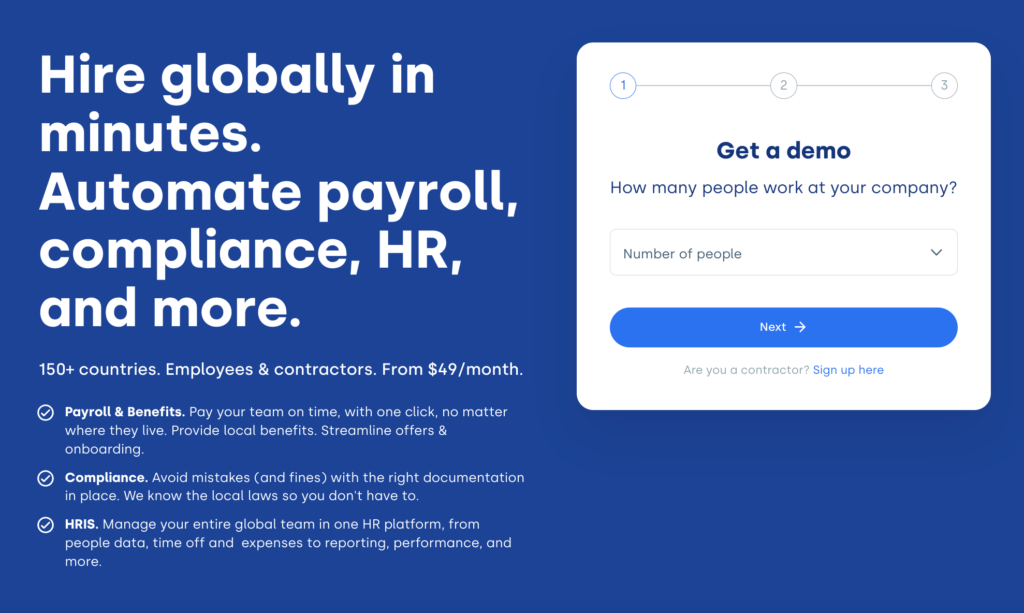
💰 Pricing: Pricing starts with a Contractor package at $49/month and goes through to a more robust Employee package, which ties in payroll functions, starting at $599/month
💬 What customers say: “Thanks to Deel, we get to hire local talent in any country where we want to expand long before we set up the entity there. Effectively, this gives us a head start.” — Luka Besling, HR Manager at Revolut
💻 Other Helpful Tools:
Omnipresent
Multiplier
Oyster
6. TeamTailor
💡 Best for candidate relationship management.
TeamTailor is an all-in-one recruitment tool and employer branding applicant tracking system. Hiring teams also use TeamTailor to create bespoke careers pages in an easy-to-use web service.
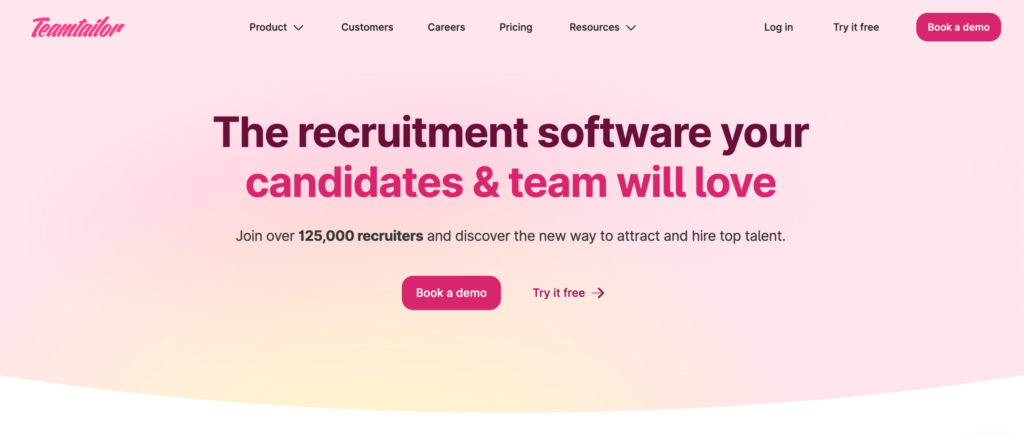
💰 Pricing: While pricing adapts according to the size of your company, it’s used both by big and small teams, offering a free trial to help you get started.
💬 What customers say: “The ease of use, the playfulness, and the personal touch we can give candidates through this system is something we praise all the time. And, of course, the way we can drive effective recruitment processes globally.” — David Lagerblad, Head of Talent Acquisition, Daniel Wellington
💻 Other Helpful Tools:
Greenhouse
Recruitee
JazzHR
7. Greenhouse
💡 Best for tracking candidates throughout the hiring process.
Greenhouse is the ultimate applicant tracking system. You can post job listings, conduct interviews, manage and engage candidates through the pipeline, and more. Customizable workflows and collaborative hiring means you can really make Greenhouse your own. Plus, powerful analytics help you make data-driven decisions at every turn.
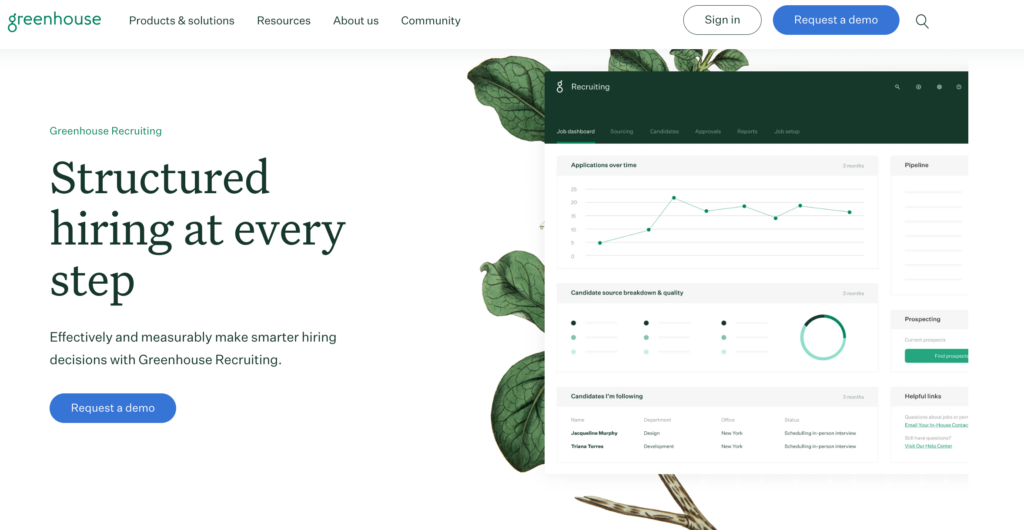
💰 Pricing: Custom pricing available upon request
💬 What customers say: “Greenhouse is an essential part of the recruiting process. From keeping our pipelines healthy, dispositioning candidates in a timely fashion, and all other important functions, Greenhouse helps us grow!” — Rebecca, Event Marketer
💻 Other Helpful Tools:
Workable
Zoho Recruit
PinPoint
8. Spark Hire
💡 Best for conducting video interviews.
Spark Hire enables you to conduct one-way video interviews to assess candidates’ soft skills. It’s currently the #1 video interview tool on the market, helping over 6000+ organizations identify their best candidates faster and more efficiently.
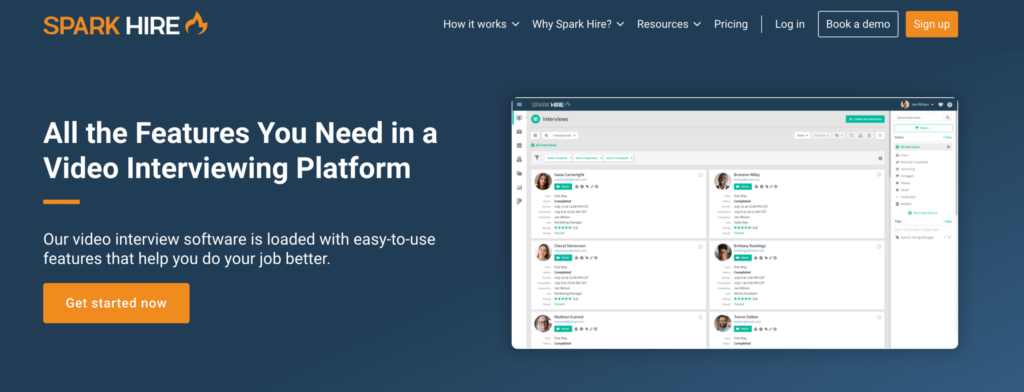
💰 Pricing: Packages range from $149/month to $499/month. Bespoke enterprise options are also available upon request.
💬 What customers say: “Spark Hire has made talent acquisition super efficient! I like the file-sharing capabilities that allow collaboration with my colleagues. All the information is stored which helps to be able to review at a later date.” — Trisha Z., Senior Director of Business Operations & Strategy
💻 Other Helpful Tools:
HireVue
VidCruiter
HireFlex
9. ZoHo Social
💡 Best for social media management.
You could have the best opening ever at the best company ever, but it’s worthless if no one knows about it. Enter Zoho Social, a social media management tool that helps you schedule, post, and share your job opening across various social media platforms simultaneously. Its performance analytics help you keep track of how each channel contributes to your recruitment strategy while maintaining streamlined hiring campaigns across your digital presence.
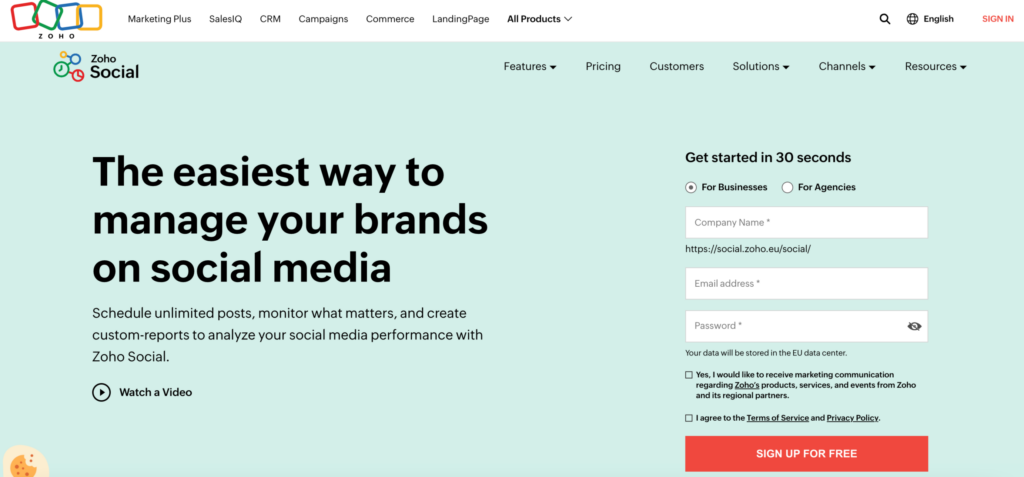
💰 Pricing: Multi-tiered subscription model ranging for professionals and agencies. Packages range from free to $35/month for professionals and $200/month to $300/month for agencies, billed annually.
💬 What customers say: “Zoho Social’s ability to provide snapshot insights for each social media platform, such as when your followers are online, follower demographics and engagement rates are incredibly helpful.” — Corey V., Database Administrator
💻 Other Helpful Tools:
HootSuite
Sprout Social
Later
10. Zapier
💡 Best for connecting your apps to automated workflows.
Zapier helps HR teams neatly link up different recruiting tasks, from planning to candidate communication, interviews, assessments, making offers, onboarding, and more. This no-code automation tool makes it simple to connect all your apps into automated workflows on a single platform, freeing up your time where it counts.
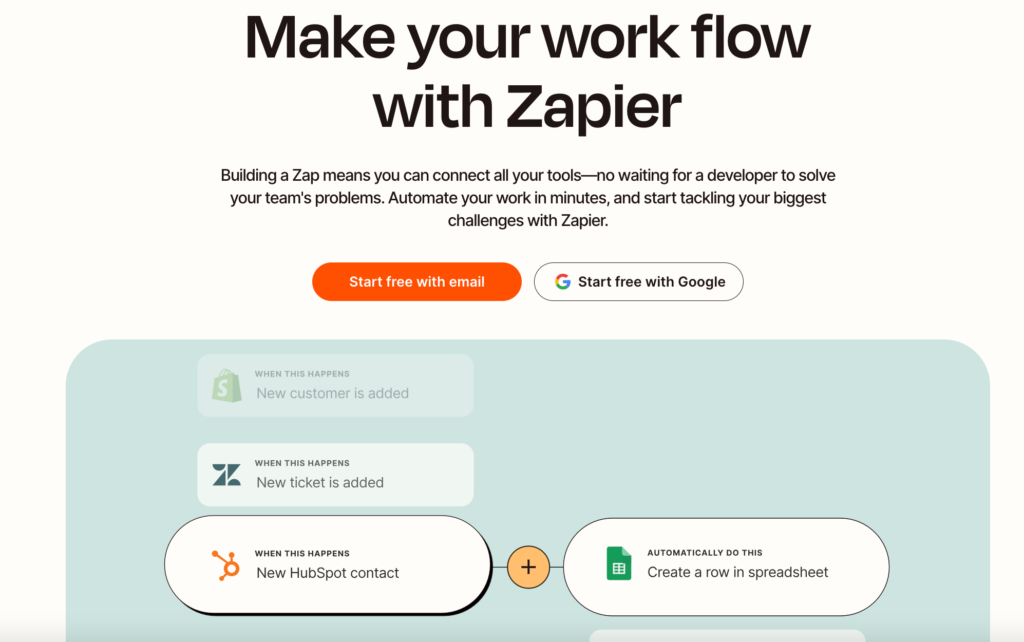
💰 Pricing: Pricing ranges from $19.99/month for the starter package to $799/month for big organizations with more complex systems.
💬 What customers say: “Without Zapier, my team’s work would amount to one or two extra workloads every week. Now we can actually focus on adding value through customer care rather than managing day-to-day operations.” — Tim Tieu, Global Community Marketing Manager, Asana
💻 Other Helpful Tools:
Crosscut
Workato
Pabbly Connect
11. LinkedIn Recruiter
💡 Best for sourcing and tracking hiring metrics.
Along with being a super job aggregation tool for potential candidates, LinkedIn also caters specifically to hiring managers. LinkedIn Recruiter helps HR professionals both source and track metrics on quality candidates to ensure you reach your goals.
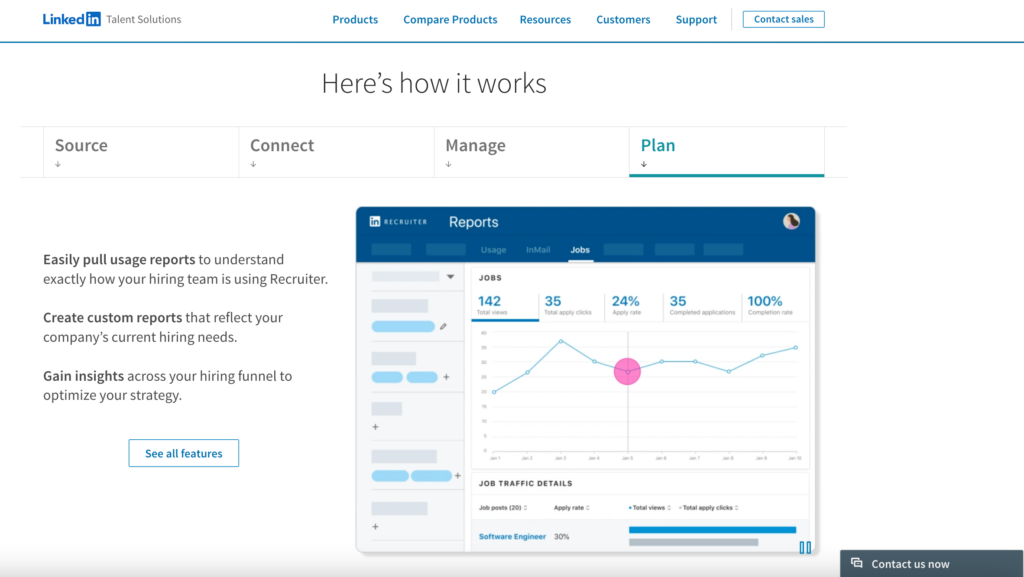
💰 Pricing: Three-tiered subscription model, with prices ranging from $2,040 to $2,670/year per license for the lowest tier. For higher tiers, custom pricing is available only upon request.
💬 What customers say: “We’re on an exciting journey connecting market recruiting activities and leveraging our combined strengths.” — Ben Clark, Corporate Head of Resourcing, Nestlé
💻 Other Helpful Tools:
hireEZ
Kaggle
Hired
12. Qureos
💡 Best for using AI to automate processes.
Qureos‘s “AI Talent Scout” Iris is more like a recommendation engine than a traditional job board. Pulling data from over 7 million LinkedIn, Indeed, and Glassdoor profiles, Iris automatically ranks the global talent pool from best to worst match for your current job openings. Iris also manages outreach, allowing you to keep the personal touch while scaling.

💰 Pricing: Only upon request, but there is a free plan available.
💬 What customers say: “Qureos helped me gain skills I never had. The staff was supportive and full of great mentors. Wonderful system and easy to navigate.” — Justin N, Researcher
💻 Other Helpful Tools:
Lever
JobDiva
Breezy HR
13. Trustcruit
💡 Best for managing candidate feedback.
TrustCruit is made for companies who want to prioritize their candidate experience. It helps you collect and analyze candidate feedback by integrating their surveys into your applicant tracking system, so you can continually improve your hiring process. Boasting clients like Peloton and Pokemon, you’d be in good company building your employer brand with TrustCruit.
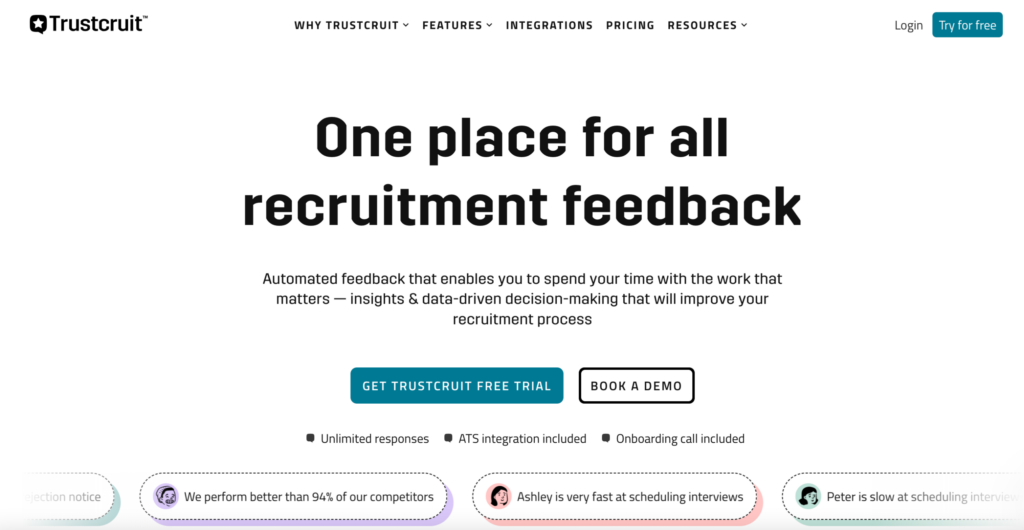
💰 Pricing: With packages starting at $300/month, it isn’t on the more affordable side. For those who want to get a taste, there is a free trial available.
💬 What customers say: “It’s an easy and quick way of giving/receiving feedback in the recruitment process. Thanks to the integrated AI tool, it can analyze all the feedback automatically.”
💻 Other Helpful Tools:
BambooHR
Insightful
WorkBright
14. Goco
💡 Best for onboarding new hires.
If you’re looking for a slick yet effective onboarding tool, you want to check out Goco.
Goco simplifies HR and benefits administration, helping small businesses do big things for their new hires. It streamlines several administrative tasks involved in the onboarding process while maintaining compliance across the board without compromising on user experience.
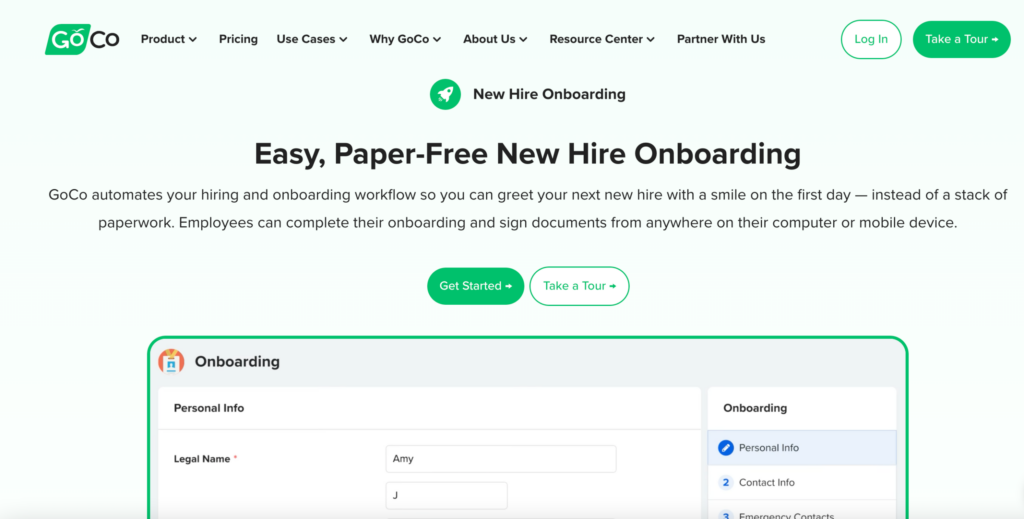
💰 Pricing: $5 per employee per month. One of the few recruiting tools in this list that operate such a pricing model — perhaps provides more ROI for larger companies.
💬 What customers say: “GoCo is extremely user-friendly for all of our employees of all ages. It has made it easier for me, as an HR department of 1, to manage benefits for 20+ employees. The ability for our bookkeeper to also have one place to pull changes in salary, salary deductions, insurance premiums, etc., has been a huge time saver.”
💻 Other Helpful Tools:
Namely
Gusto
Rippling
15. Gusto
💡 Best for managing payroll.
Gusto takes the cake when it comes to payroll management. Voted #1 payroll software of 2024, Gusto promises to “put the joy back in running your business.” By automating payroll processing and minimizing errors, you can get back to building your vision with the peace of mind that your employees are taken care of.

💰 Pricing: Available in three tiers.
Simple — $40/month fee + $6 per user/month
Plus — $80/month fee + $12 per user/month
Premium — bespoke pricing available upon request
💬 What customers say: “Gusto has truly streamlined our payroll process, making running payroll and managing corrections a hassle-free experience. The comprehensive reporting tools are user-friendly and offer a variety of options to access the exact information we need.” — Janene S.
💻 Other Helpful Tools:
Leapsome
Pento
Xero
What’s the best recruitment tool?
We get that your team might not have the budget for all of these solutions — yet. However, the best recruitment tools are constantly evolving, which means costs are coming down, and integration with your other tools is getting easier.
If you’re looking for a great all-rounder to cover most of your bases for a great price, Toggl Hire could be the tool for you, enabling your team to screen and assess candidates, stay in touch effortlessly, give feedback, remain unbiased, and see in-depth analytics all on the same platform.
If you’re ready to hire better with less effort, get started with a free Toggl Hire account!

Julia is a freelance writer and fierce remote work advocate. While traveling full-time, she writes about the intersection of technology and productivity, the future of work, and more. Outside work, you can find her hiking, dancing, or reading in a coffee shop.






